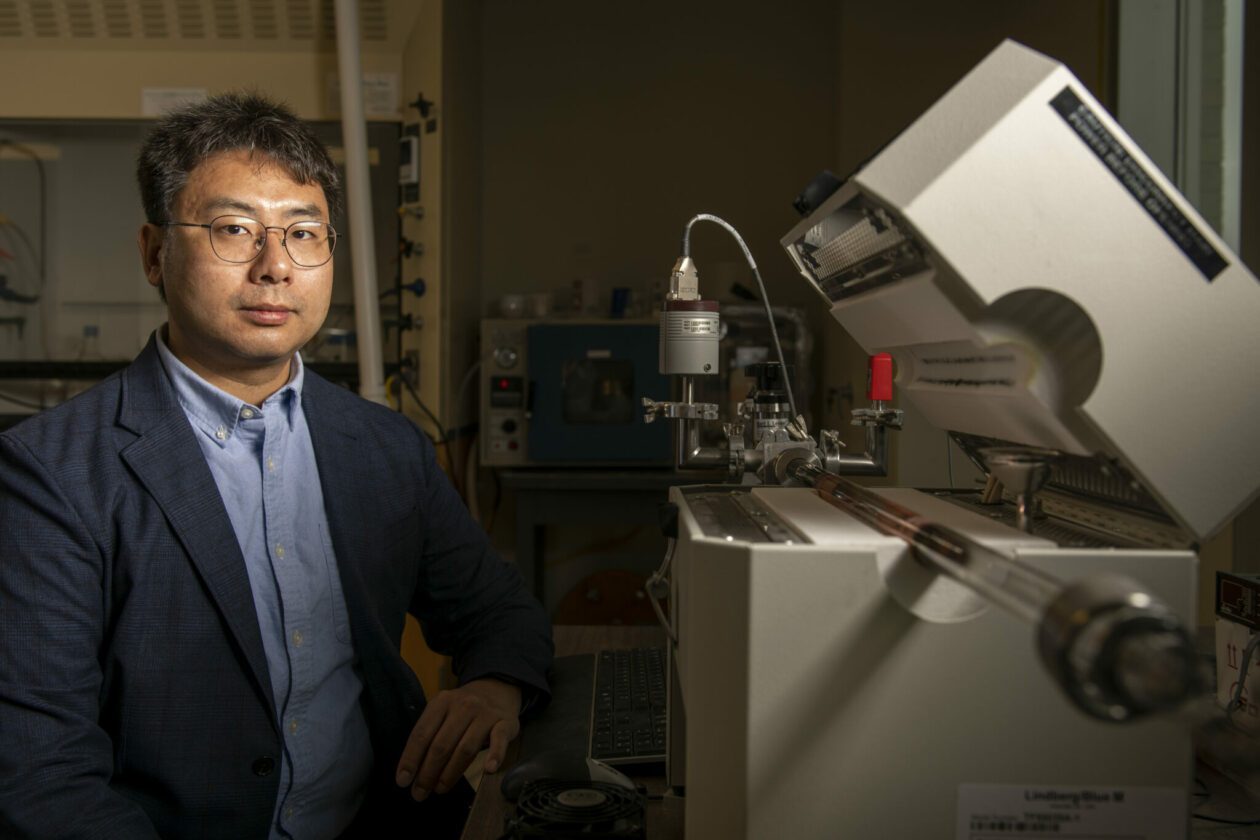Missouri S&T researcher wins NSF CAREER Award for 2D metals research
Posted by Nancy Bowles

Dr. Chenglin Wu, assistant professor of structural engineering, has won a National Science Foundation (NSF) CAREER Award for his work in 2D metals. Photo by Michael Pierce, Missouri S&T.
As electronic devices get smaller and faster, computer chips must get thinner to save space and improve performance. Dr. Chenglin Wu, an assistant professor of civil, architectural and environmental engineering at Missouri S&T, has won a $500,000 CAREER Award from the National Science Foundation for his work in two-dimensional metals – metals that are three atoms thick – for use in computer chips, sensors and coatings.
“Traditional computer chips are made by stacking silicon dies, but you cannot infinitely thin the silicon or the matrix materials, so there’s a need for replacement materials,” says Wu. “2D materials are the ideal candidate.”
Wu is working with two different types of materials – titanium carbide (Ti2C) and molybdenum disulfide (MoS2), each three atoms thick. He says the materials can be stacked like sheets of paper to serve multiple functions, but adhesion and fragility can be challenging. Wu says those challenges limit commercial applications of the technology.
“The 2D materials begin to break down when they undergo a chemical reaction, and they lose their ‘stickiness,’” he says. “The real issue is the materials are always under strain, either bent or stretched. With this CAREER Award, I will develop unique tools to study the mechanism that causes the breakdown and find ways to prevent it.”
Wu says commercial interest in 2D materials is growing, and the market for the materials is projected to be $6 billion by 2035. He adds that the semiconductor and coating industries are already moving into 2D materials as the cost comes down.
Another industry that could benefit from 2D applications is health care, Wu says. He and other researchers at Missouri S&T are using 2D materials in sensors to detect COVID-19 in people’s breath.
“We recently ran a hospital experiment with Phelps Health, and our test was spot-on with the hospital’s standard test,” he says. “The beauty of it is that our test takes about 30 milliseconds to detect COVID, where the standard test takes 15 minutes. Our test can also differentiate between COVID and the flu.”
Wu says S&T researchers are developing a Bluetooth cell phone application that works with a 2D sensor in a mask to detect viruses, sending data from the mask directly to your phone and alerting the testing center. They are also working with collaborators at other universities across the country to develop wearable sensing devices, including a patch that can monitor diabetes using 2D sensor technology.
“So that’s the future we’re working on here,” Wu says.
About Missouri University of Science and Technology
Missouri University of Science and Technology (Missouri S&T) is a STEM-focused research university of over 7,600 students and part of the four-campus University of Missouri System. Located in Rolla, Missouri, Missouri S&T offers 101 different degree programs in 40 areas of study and is ranked by CollegeFactual as the best public university to study engineering. For more information about Missouri S&T, visit www.mst.edu.
Leave a Reply